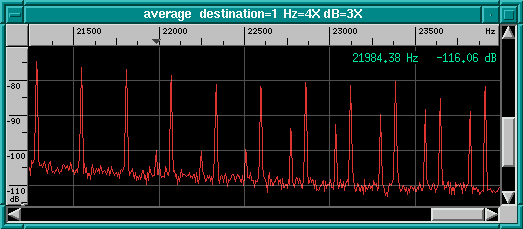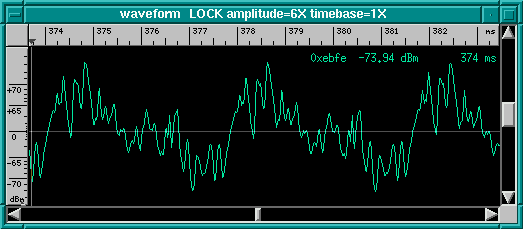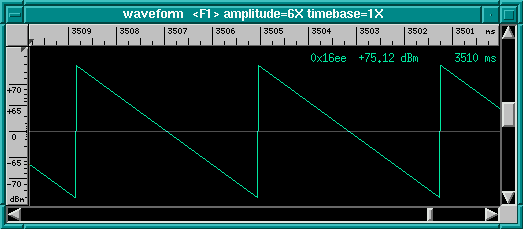We've got signal, but what the heck is it?
That's your mission. Analyze this bébé.

 download the audio file 10.wav.bz2
download the audio file 10.wav.bz2
hints :
- No need to bunzip2 this file since baudline can automatically uncompress
files.
-
Setup baudline to be a Web Browser helper application as described in the
FAQ.
-
Use baudline's
harmonic helper bars
to determine harmonic relationships.
What is it?
A Sonicare PS-1 toothbrush with "patented sonic technology!"
A popular misconception is that the Sonicare is an ultrasonic
toothbrush. The manufacturer claims that their toothbrush "cleans with a
combination of 31,000 brush strokes per minute and sonic waves." Cool,
yes. Ultrasonic, no. Unfortunately this fact hasn't stopped
consumers from flipping the strokes-per-minute units into
strokes-per-second. If you do a search on Google for the terms Sonicare
and ultrasonic you will be rewarded with almost 2000 results. Uhhhh, I
mean 2000 wrong results!
So what really is the buzz on this "patented sonic technology?" Let's
break it down:
Using baudline's harmonic helper bars quickly determines that all of the
vertical frequency lines are harmonics of a 263 Hz fundamental. This
means the toothbrush head is moving back and forth 263 times per second.
Multiply 263 by 120 and you get 31560 which is very near the manufactures 31000
listed brush strokes per minute. It is interesting that each half-cycle
is considered a full "brush stroke."

So is this ultrasonic? The 263 Hz fundamental is closer to infrasonic
than it is ultrasonic, but there are strong harmonics that span well beyond
20kHz. Our equipment only recorded at a 48000 per second sample rate but
if you use a large FFT and average the spectral data to reduce the variance of
the noise floor you can see a little more. The harmonics go up to the
Nyquist rate and then are folded back as the low pass filter roll-off of the
ADC slowly attenuates the aliasing. Looking in the Average window (above
picture) you can see a folded frequency of 21984 Hz which corresponds to the
actual frequency of almost 26000 Hz. So it is definitely possible that
the Sonicare harmonics of the 263 Hz fundamental strongly extend out to
100kHz+. It is also possible that these higher harmonics have a similar
cavitating plaque removal ability that a true ultrasonic cleaner would possess.

Another interesting observation in the picture above is that the shape of the
waveform looks a lot like a Sawtooth (ramp down) function. Baudline's
Tone Generator can
be used to create a clean ramp down function (see picture below) that has a
very similar harmonic structure. So the waveform shape can be thought of
as a combination of the Sonicare toothbrush's internal mechanical oscillating
mechanism coupled with the resonant properties of the brush head and arm
assembly.

|
![]()